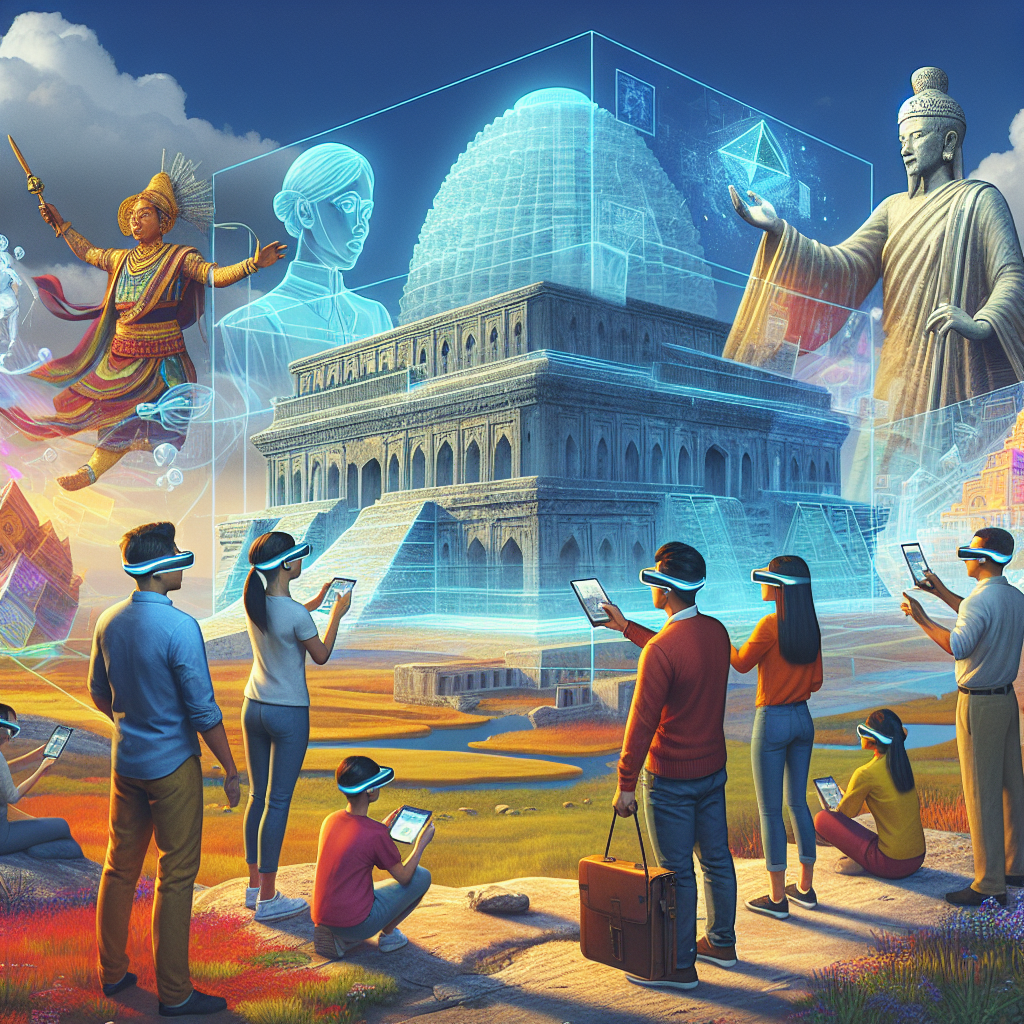Augmented Reality (AR) has been making waves in the world of technology, offering new and innovative ways to explore and experience the world around us. In recent years, this technology has also been increasingly applied in the realm of cultural tourism, offering a transformative potential that promises to enhance our understanding and appreciation of heritage sites, museums, and other cultural attractions. From interactive storytelling to virtual reconstructions, AR is changing the way we engage with our past and present, opening up new frontiers in cultural tourism.
The use of AR in cultural tourism allows visitors to dive deep into the history and stories of a place in ways that were previously impossible. By overlaying digital information on the physical world, AR can bring historical figures to life, transport visitors to different time periods, and offer immersive experiences that educate and entertain. This technology has the power to make cultural tourism more engaging, interactive, and accessible to a wider audience, helping to preserve and promote our shared heritage.
One of the most exciting applications of AR in cultural tourism is the ability to create virtual reconstructions of sites and monuments that have been damaged or destroyed over time. By using historical data, photographs, and other resources, AR can recreate these lost treasures in stunning detail, allowing visitors to explore and learn about them as if they were standing right in front of them. This not only helps to preserve our cultural heritage but also offers a glimpse into the past that would otherwise be impossible to experience.
Another way AR is transforming cultural tourism is through interactive storytelling. By using AR technology, museums and heritage sites can create interactive experiences that engage visitors in new and exciting ways. For example, visitors can use their smartphones or AR glasses to unlock hidden stories, solve puzzles, and discover hidden secrets within a museum or historical site. This not only enhances the visitor experience but also encourages deeper engagement and understanding of the cultural significance of the place.
AR also has the potential to make cultural tourism more accessible to a wider audience. By offering virtual tours and experiences, people who may not be able to physically visit a site can still explore and learn about its history and significance. This opens up new opportunities for education, inclusion, and cultural exchange, allowing people from all over the world to connect with and learn from each other’s heritage.
In addition to its transformative potential in cultural tourism, AR also presents exciting opportunities for businesses, researchers, and developers. The growing demand for AR experiences in cultural tourism has created a burgeoning industry, with companies and startups around the world innovating and creating new applications and technologies to enhance the visitor experience. Researchers are also exploring the potential of AR to study and document cultural heritage, preserving it for future generations.
As AR continues to evolve and expand, the possibilities for cultural tourism are endless. From virtual reality tours of ancient civilizations to interactive exhibits in museums, AR is reshaping the way we learn, explore, and connect with our shared heritage. The transformative potential of AR in cultural tourism is truly awe-inspiring, offering new ways to engage with the past and present in ways that were previously unimaginable.
FAQs:
Q: What devices are needed to experience AR in cultural tourism?
A: To experience AR in cultural tourism, visitors typically need a smartphone or tablet with a compatible AR app installed. Some museums and heritage sites also offer AR glasses or devices for a more immersive experience.
Q: Are there any costs associated with using AR in cultural tourism?
A: The cost of experiencing AR in cultural tourism varies depending on the site or museum. Some attractions may offer AR experiences for free, while others may charge a fee for access to premium content or tours.
Q: How is AR different from virtual reality?
A: AR overlays digital information on the physical world, allowing users to interact with both the real and virtual environments. Virtual reality, on the other hand, immerses users in a completely virtual world, with no connection to the physical surroundings.
Q: Can AR be used in outdoor cultural tourism sites?
A: Yes, AR can be used in outdoor cultural tourism sites to provide interactive experiences and virtual reconstructions of historical landmarks and monuments. This technology can enhance the visitor experience and offer new ways to engage with the site’s history and significance.
Q: How can museums and heritage sites incorporate AR into their exhibits?
A: Museums and heritage sites can incorporate AR into their exhibits by creating interactive experiences, virtual reconstructions, and storytelling opportunities. By using AR technology, these institutions can engage visitors in new and exciting ways and enhance their understanding and appreciation of the site’s cultural significance.
In conclusion, the transformative potential of AR in cultural tourism is vast and promising. From virtual reconstructions to interactive storytelling, this technology is reshaping the way we explore and connect with our shared heritage. As AR continues to evolve and expand, the possibilities for cultural tourism are endless, offering new frontiers for exploration and discovery.
